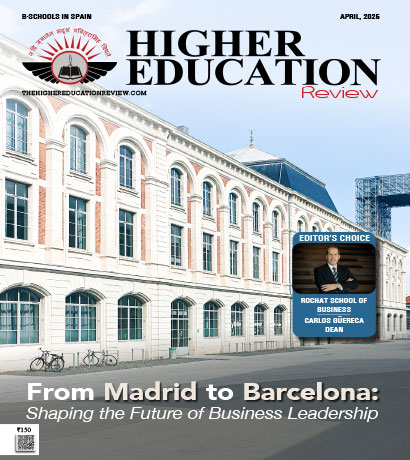Higher Education in the Cloud - Transformation in Motion

Dr. Ashish Bharadwaj, CIO Laureate Education India
The Massachusetts Institute of Technology (MIT), in 2002, began offering all of its undergraduate courses available online for free. In 2011, an American study claimed that 45 percent of college students couldn't demonstrate any increase in knowledge after their first two years of traditional college. In the same year, driven by the steep increase in tuition fees (that has consistently outpaced the rate of inflation since 2000), Colleges and Universities began to voluntarily decrease their tuition.
In 2012, a trio of high profile Massive Open Online Course providers, or MOOCs, began offering free interactive classes from some of the top universities, professors, and experts in the world. Since then, Coursera, edX, and Udacity'and dozens of other MOOCs'have gone on to attract millions of students to their hundreds of high-quality and career-relevant courses and, in the process, are profoundly changing what defines higher education. They are offering content, and faculty lectures online at no cost, only charging for accreditation through a certificate on successful completion of the course. Faculty teaching these courses challenge themselves and rapidly ramp up their skills to become 'best in class' since they migrate from teaching a finite group of students (selected through a common selection process) in a classroom to a global audience ' with disparate and varied intellectual prowess who are interested and self-motivated to learn that subject. For faculty, this has the ability to potentially scale to a scenario where all 7 billion people on the planet can be students ' and not just for two, three or four years, but for lifelong learning!
Learners today increasingly want to learn from instructors who are leaders in their field and can teach them relevant skills in the most contemporary way possible - online!
The above examples point toward a larger structural change in higher education. How knowledge is being disseminated and shared is shifting, the demands and needs of students are changing, learning habits are in flux, and by necessity (albeit slowly) new educational models are emerging. Till recently online education was considered a poor cousin to traditional brick and mortar education. Debates ranged on how to find adequately skilled and relevant teachers for these institutions. Today, most of what a learner 'learns' can be looked up in seconds on the Internet Cloud, and personalized instruction via machine learning algorithms that 'learn' how best to 'deliver' instruction are fast gaining traction. Therefore, we are in an era where 'knowing has actually become obsolete', but 'knowing how to use the vast resources available online to find answers to questions and concepts is paramount.'
Games, (often available on smartphones and tablets) imbibe the highest standards of instructional Design and user experience. These devices are the first user interface for children born in the last decade, and such applications train the user to think in a way that facilitates finding solutions to new (and challenging) problems. Learning, therefore, is not about studying endlessly about facts anymore. Most degree programs are based on antiquated models that were developed to produce uniform industrial age workers ' which are irrelevant in today's job market. If we look at engineering graduates in India alone, estimates have indicated that between 75-90 percent (in India) are not employable as they do not possess the skills and/or aptitude relevant in today's workplace.
The traditional benefits of going to a college/University and learning in huge rooms with a faculty who may never have worked outside academics their whole life teaching students skills relevant a decade ago are fast becoming pass�. Learners today increasingly want to learn from instructors who are leaders in their field and can teach them relevant skills in the most contemporary way possible ' online! Social skills that used to get developed through interaction with peers are being replaced by social networks, Instant Messengers, and other collaboration/communication tools available on the Internet ' that have been around since these students were born. It is increasingly common to find close friends sitting in the same physical space, not speaking to each other, yet furiously typing away on their smartphone/tablet, interacting with multiple friends around the world. Last but not least, (most) Universities today do little to equip a student with skills like intellectual curiosity, innovative thinking and creative problem-solving.
As an increasing trend even in India, learners today have been demonstrating the knowledge and ability to create innovative products and technologies, creating disruptive startups that, at times, leave entire industries in the dust. Crowdsourced funding models through micro-loans are becoming more routine by the day thus making many of these startups economically viable.
Of course, the impact of these trends would be different in different economies and geographies. But one thing is unmistakable. Higher Education today isn't about learning something by going to a physical space to get 'an education.' It's about what the learner does ' a series of experiences in learning to dexterously adapt to change, navigating and curating the ocean of knowledge that surrounds us in the Cloud.
Dr. Ashish Bharadwaj
Ashish Bharadwaj is currently working in Laureate Education India, which is the largest global network of degree-granting higher education institutions, having more than one million students enrolled across more than 80 institutions.
In 2012, a trio of high profile Massive Open Online Course providers, or MOOCs, began offering free interactive classes from some of the top universities, professors, and experts in the world. Since then, Coursera, edX, and Udacity'and dozens of other MOOCs'have gone on to attract millions of students to their hundreds of high-quality and career-relevant courses and, in the process, are profoundly changing what defines higher education. They are offering content, and faculty lectures online at no cost, only charging for accreditation through a certificate on successful completion of the course. Faculty teaching these courses challenge themselves and rapidly ramp up their skills to become 'best in class' since they migrate from teaching a finite group of students (selected through a common selection process) in a classroom to a global audience ' with disparate and varied intellectual prowess who are interested and self-motivated to learn that subject. For faculty, this has the ability to potentially scale to a scenario where all 7 billion people on the planet can be students ' and not just for two, three or four years, but for lifelong learning!
Learners today increasingly want to learn from instructors who are leaders in their field and can teach them relevant skills in the most contemporary way possible - online!
The above examples point toward a larger structural change in higher education. How knowledge is being disseminated and shared is shifting, the demands and needs of students are changing, learning habits are in flux, and by necessity (albeit slowly) new educational models are emerging. Till recently online education was considered a poor cousin to traditional brick and mortar education. Debates ranged on how to find adequately skilled and relevant teachers for these institutions. Today, most of what a learner 'learns' can be looked up in seconds on the Internet Cloud, and personalized instruction via machine learning algorithms that 'learn' how best to 'deliver' instruction are fast gaining traction. Therefore, we are in an era where 'knowing has actually become obsolete', but 'knowing how to use the vast resources available online to find answers to questions and concepts is paramount.'
Games, (often available on smartphones and tablets) imbibe the highest standards of instructional Design and user experience. These devices are the first user interface for children born in the last decade, and such applications train the user to think in a way that facilitates finding solutions to new (and challenging) problems. Learning, therefore, is not about studying endlessly about facts anymore. Most degree programs are based on antiquated models that were developed to produce uniform industrial age workers ' which are irrelevant in today's job market. If we look at engineering graduates in India alone, estimates have indicated that between 75-90 percent (in India) are not employable as they do not possess the skills and/or aptitude relevant in today's workplace.
The traditional benefits of going to a college/University and learning in huge rooms with a faculty who may never have worked outside academics their whole life teaching students skills relevant a decade ago are fast becoming pass�. Learners today increasingly want to learn from instructors who are leaders in their field and can teach them relevant skills in the most contemporary way possible ' online! Social skills that used to get developed through interaction with peers are being replaced by social networks, Instant Messengers, and other collaboration/communication tools available on the Internet ' that have been around since these students were born. It is increasingly common to find close friends sitting in the same physical space, not speaking to each other, yet furiously typing away on their smartphone/tablet, interacting with multiple friends around the world. Last but not least, (most) Universities today do little to equip a student with skills like intellectual curiosity, innovative thinking and creative problem-solving.
As an increasing trend even in India, learners today have been demonstrating the knowledge and ability to create innovative products and technologies, creating disruptive startups that, at times, leave entire industries in the dust. Crowdsourced funding models through micro-loans are becoming more routine by the day thus making many of these startups economically viable.
Of course, the impact of these trends would be different in different economies and geographies. But one thing is unmistakable. Higher Education today isn't about learning something by going to a physical space to get 'an education.' It's about what the learner does ' a series of experiences in learning to dexterously adapt to change, navigating and curating the ocean of knowledge that surrounds us in the Cloud.
Dr. Ashish Bharadwaj
Ashish Bharadwaj is currently working in Laureate Education India, which is the largest global network of degree-granting higher education institutions, having more than one million students enrolled across more than 80 institutions.

